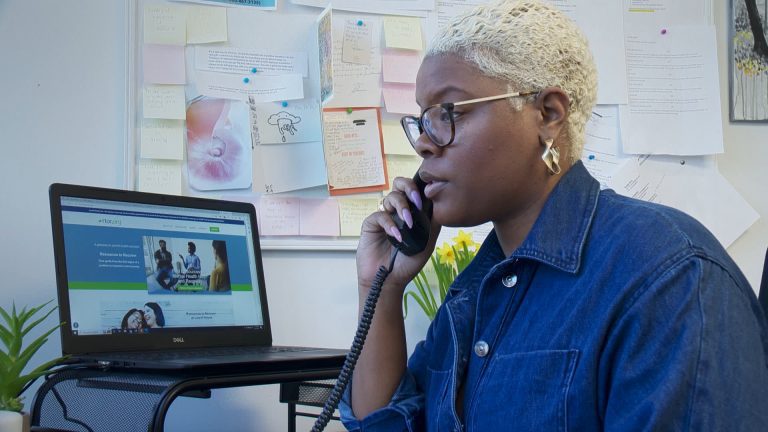Adolescence is marked by rapid development, not just physically but emotionally and mentally. As teens navigate this tumultuous period, many are faced with mental health issues that can have lasting impacts. In this crucial phase of life, therapy is essential, serving as a bridge to more robust mental health, resilience, and well-being.
Understanding Teen Mental Health
Today’s teens grapple with a multitude of unique challenges. From the relentless pace of social media to the pressure of an uncertain future, the magnitude of stressors is unprecedented. With a surge in cases of depression, anxiety, addiction, and eating disorders, the mental health landscape for teenagers is fraught with concerns often exacerbated by insufficient support and understanding. These issues must be addressed early to set the stage for a healthier adulthood.
Stigma and Misconceptions Surrounding Teen Therapy
The path to seeking help is often blocked by pervasive stigma. There’s a myth that therapy is only for the “seriously ill” or that seeking help is a sign of weakness, particularly for young people. This stigma, coupled with misconceptions about the therapy process, prevents many teenagers from getting the help they need. Addressing these false beliefs is the first step towards bridging the gap.
The Science of Teen Brain Development
The teenage brain is a work in progress, undergoing significant changes that lay the foundations for adult life. Emotional volatility during this phase is more than just a stereotype. It’s rooted in the ongoing development of brain areas that regulate emotions and reasoning. Therapy can guide teens to understand and manage their feelings, aiding in healthy brain maturation.
Different Modalities of Therapy for Teenagers
Tailored approaches can make all the difference in effective treatment.
- Cognitive Behavioral Therapy (CBT): CBT is highly effective for teens because it addresses harmful thought patterns that can contribute to issues like anxiety and depression. It offers practical tools that teens can use to manage stressors and emotions.
- Dialectical Behavior Therapy (DBT): DBT provides valuable skills for emotional regulation and interpersonal effectiveness, making it particularly useful for teens who experience intense emotions or relationship challenges.
- Family Therapy: The family’s role in a teen’s mental health is often pivotal. Family therapy can help resolve conflicts and improve communication, creating a more supportive home environment.
- Group Therapy: This form of treatment offers a setting where teenagers can relate to their peers who face similar issues. It validates their feelings and teaches social skills in a safe space.
- Play and Art Therapy: For younger teens or those with difficulty expressing themselves, play and art therapy allow communication through creation, indirectly facilitating healing.
- Narrative Therapy: This therapy empowers teens by helping them separate themselves from their problems, allowing them to rewrite the narratives of their lives.
- Experiential Therapy: Activities like role-playing, music, and wilderness therapy engage teens in experiences that lead to emotional expression, self-discovery, and more profound healing.
- Mindfulness-Based Therapy: It encourages teens to focus on the present, increasing their awareness and acceptance of their thoughts and feelings without judgment.
The Role of Schools and Educational Institutions
Schools are an integral part of the support network for teen mental health. They can implement early detection strategies to identify struggles before escalating.
- Training Educators: Teachers and school staff trained to recognize signs of emotional distress can ensure early intervention.
- Counseling Services: On-site therapists or school counselors provide immediate support and can establish trusted relationships with students.
- Peer-to-Peer Programs: Programs that train students to provide peer support can create a community of care within the school.
- Awareness Campaigns: Regular events or workshops can educate students about mental health, reduce stigma, and encourage them to seek help.
- Collaboration with Mental Health Professionals: Partnerships with local mental health services can provide resources and specialized care for students who need it.
Encouraging Teen to Embrace Therapy
The path to accepting therapy begins with conversation and trust. It’s essential to approach the subject without bias, presenting therapy as a standard, positive aspect of healthcare.
- Open Dialogue: Initiate conversations about mental health in everyday settings to normalize discussion.
- Role Modeling: Adults can share their experiences with therapy to show that seeking help is a sign of strength, not weakness.
- Education: Educational materials and resources can help demystify the therapy process for teens and their parents.
- Accessibility: Ensure teens know how to access therapy services and understand that there are varied approaches to suit their needs.
- Support Systems: Offer judgment-free zones in schools where students can express their concerns mentors, peers, and counselors.
- Celebrate Successes: Share success stories of therapy to highlight its effectiveness and how it can positively change lives.
Success Stories: Real-Life Impact of Therapy on Teen Mental Health
Therapy can transform lives. Real-life stories of teens who’ve overcome their struggles with the help of therapy can inspire and offer hope. These narratives underscore the positive outcomes that can arise from timely and effective mental health intervention.
Integrating Technology: Modern Solutions to Teen Mental Health
In the digital age, access to therapy has expanded with online platforms and apps tailored for mental health support. Teletherapy has emerged as a viable option, bringing professional assistance directly to those who might not otherwise have access due to geographic or social constraints.
Conclusion
The role of therapy in addressing teen mental health cannot be understated. It serves as a fundamental bridge, helping our youth navigate the complexities of their emotions and experiences. As a society, it falls to us all—parents, educators, professionals, and policymakers—to commit to supporting the mental health of our teenagers for their sake today and for the health of society tomorrow.
Let us advocate for better mental health support and resources in our schools. If you know a needy teenager, help them find a compassionate therapist. Let’s cultivate an environment where mental health is an open conversation and therapy is recognized as a courageous step toward personal growth and healing.

Author Bio: I’m Stacy J. Bryant, a passionate mental health content writer, blending my talents at Ability Plus Mental Health Clinic and SpringHive. My mission is to demystify mental health, providing insights on ADHD, medication management, and more at Ability Plus. Concurrently, I craft engaging web content for Mental Health Care clients at SpringHive Digital Marketing Agency, aiming to make discussions around mental health more accessible. Working across these platforms, I seek to break down barriers, share knowledge, and support our community’s mental well-being. My writing is not just information; it’s a tool for empowerment designed to guide individuals toward a healthier, more understanding future.
Photo by Julia M Cameron: https://www.pexels.com/photo/boy-in-yellow-crew-neck-t-shirt-while-holding-tablet-4144102/
The opinions and views expressed in any guest blog post do not necessarily reflect those of www.rtor.org or its sponsor, Laurel House, Inc. The author and www.rtor.org have no affiliations with any products or services mentioned in the article or linked to therein. Guest Authors may have affiliations to products mentioned or linked to in their author bios.
Recommended for You
- How a Health Cleanse Can Reset Your Body and Mind - April 16, 2025
- The Truth about Relapse in Addiction Recovery - April 14, 2025
- The Power of Peer Support in Mental Health Recovery - April 10, 2025







